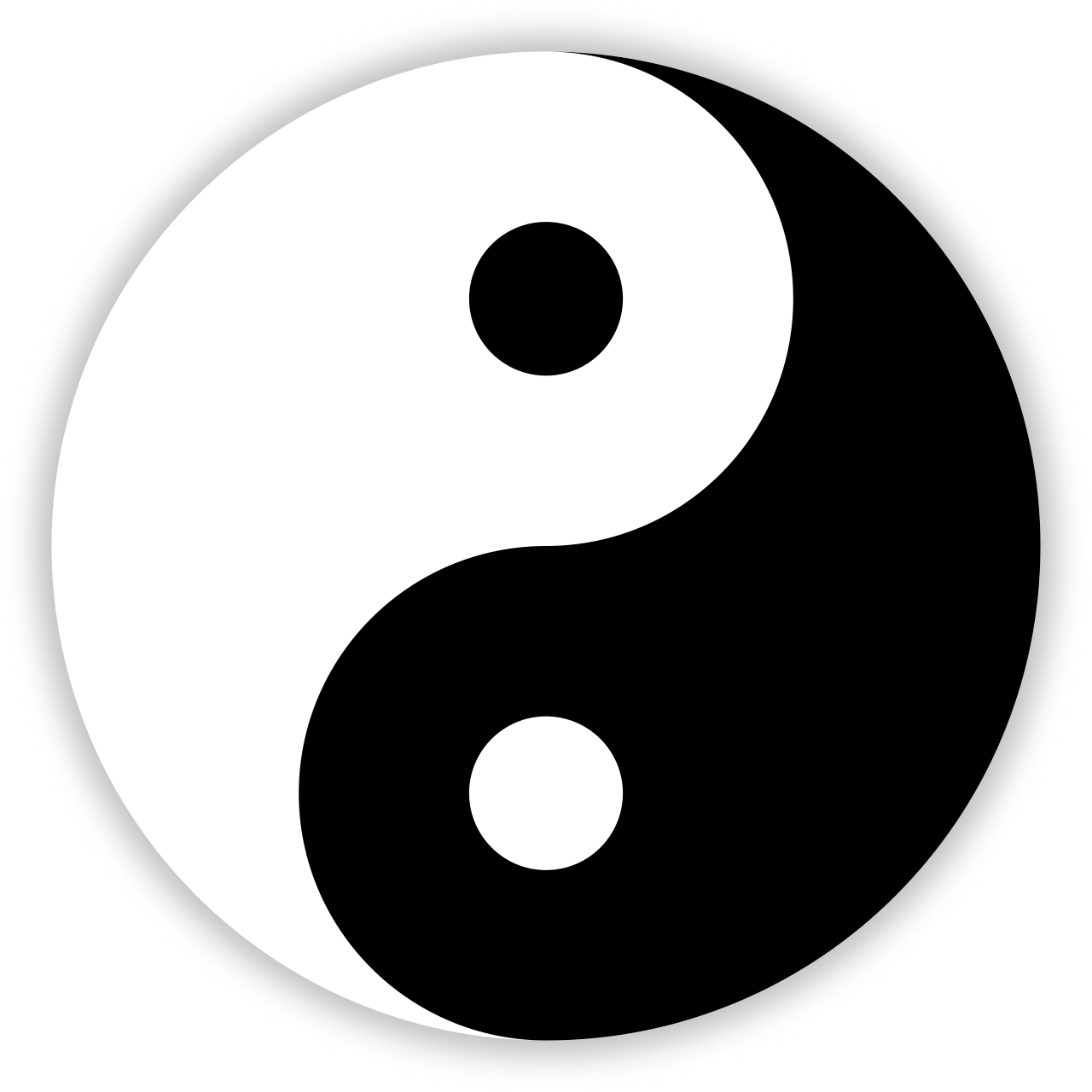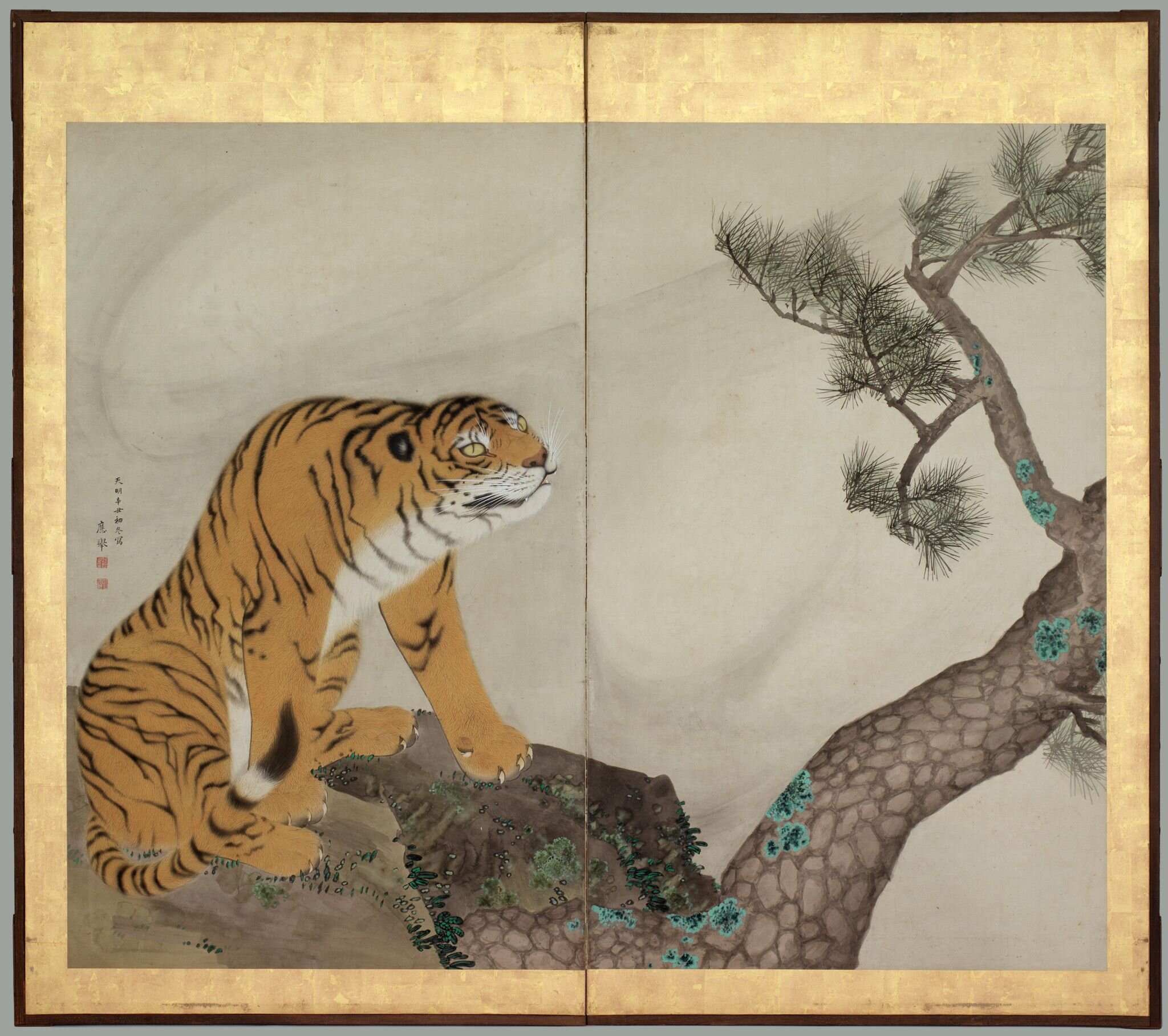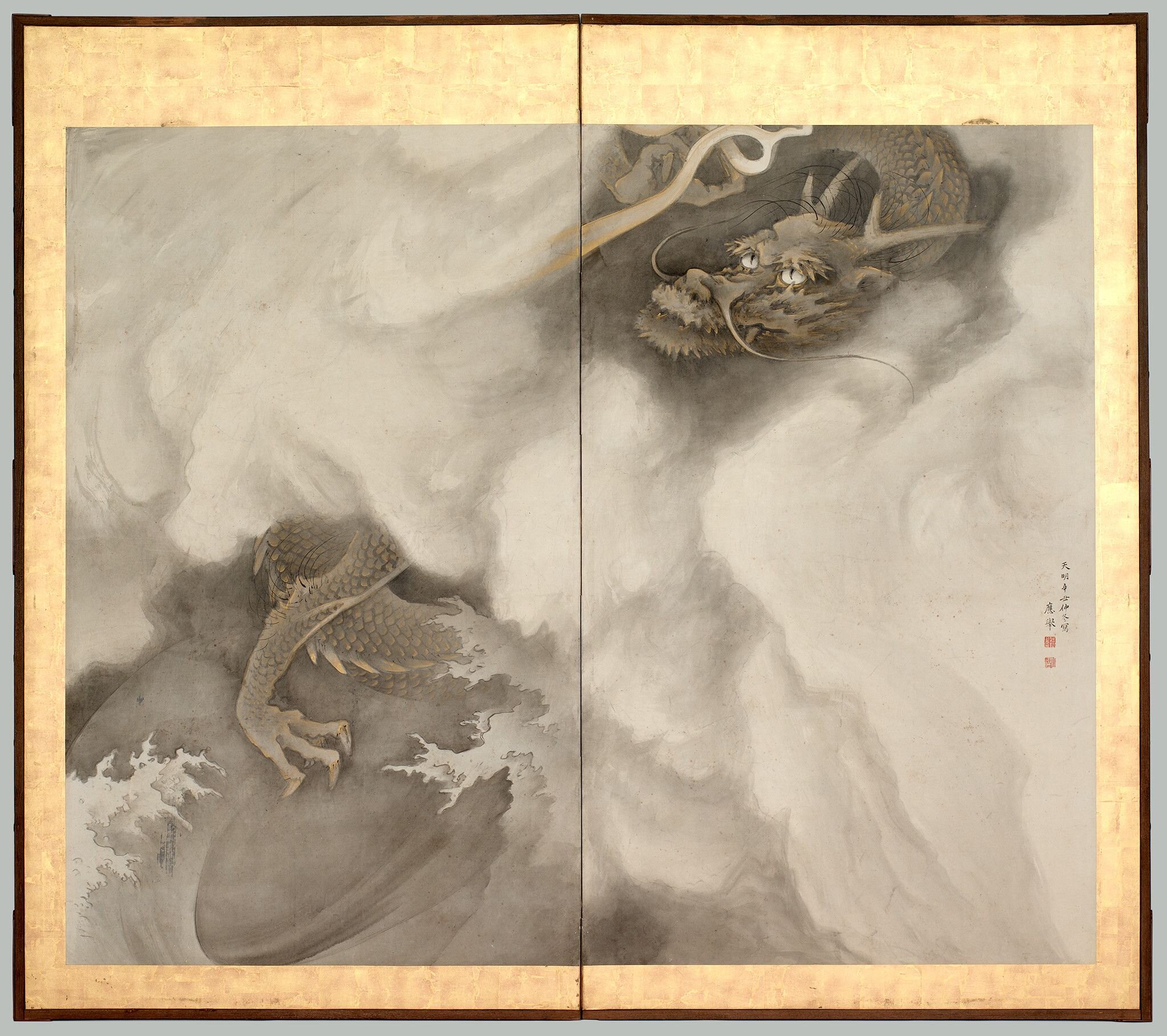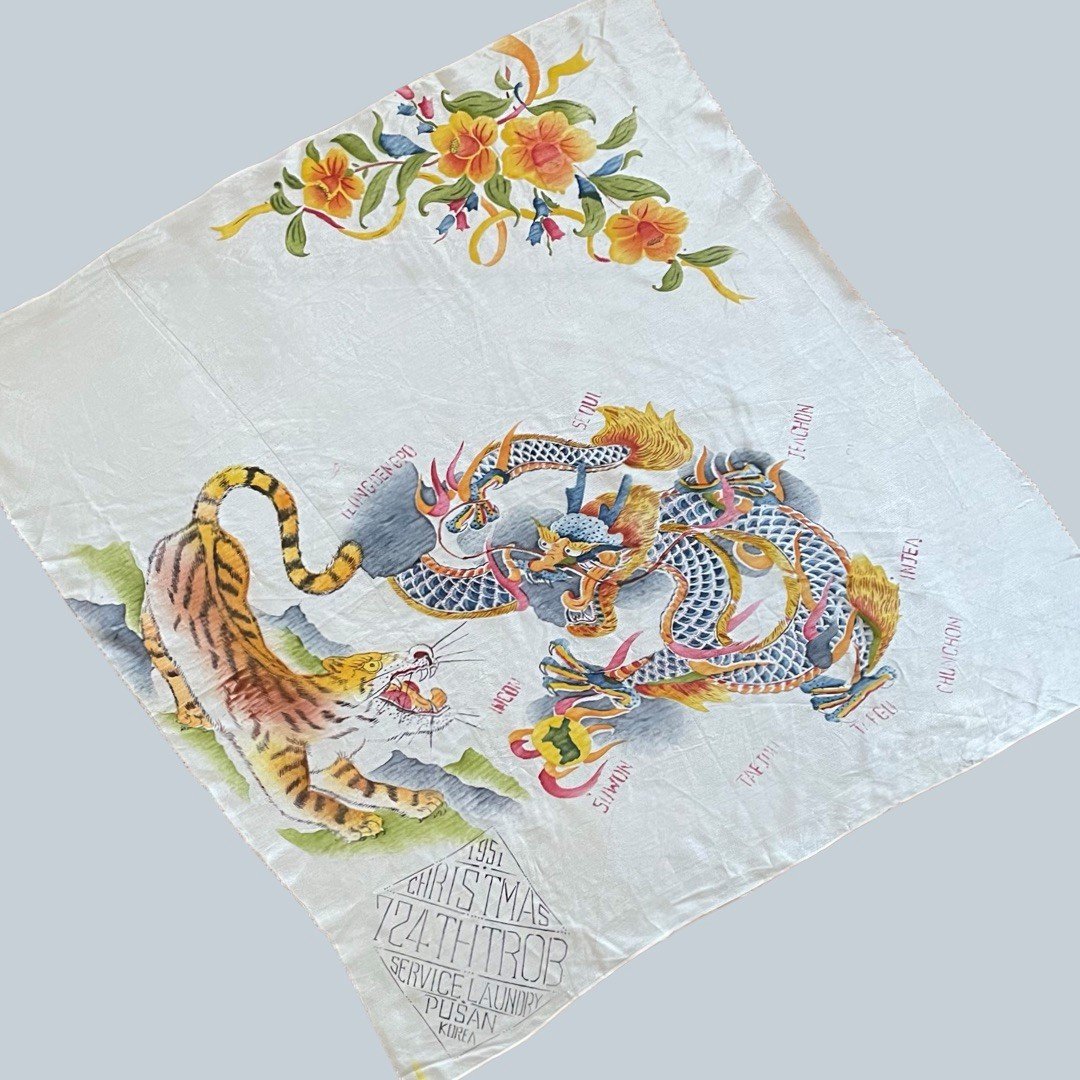Enter the Dragon
The dragon is one of the most fascinating creatures of myth, an amalgamation of many animals—serpent, horse, eagle, stag, carp, camel, and crocodile, to name a few. Across cultures, the dragon emerges as a potent symbol, embodying vastly different ideas depending on the worldview.
In Western traditions, the dragon is often depicted as a beast to be conquered by the righteous. Saint Michael and Saint George are celebrated for their bravery in slaying dragons, acts that symbolize the triumph of good over evil, light over darkness. The dragon, in this context, is the primordial foe, a reminder of the dangers lurking in the unknown.
But in the East, the dragon takes on an entirely different role: it is revered, a symbol of power, wisdom, and prosperity. In Chinese culture, the dragon is an emblem of Imperial authority, its coiling form woven into the fabric of dynastic rule. Far from a villain, the dragon is seen as a guardian of balance, a creature that controls the weather, from gentle rains to fierce storms, ensuring harmony in the natural world.
This exploration delves into the Eastern interpretation of the dragon, uncovering its rich symbolism and the frequent companions that enhance its legend. From benevolent bringer of rain to celestial ruler of the heavens, the dragon invites us to see how myth and reverence intertwine in the tapestry of cultural tradition.
The Dragon and The Tiger: An Odd Couple?
In ancient Chinese cosmology, the dragon and tiger stand as rulers of the natural world, governing the elemental forces of wind and rain. At first glance, the pairing of two powerful and ferocious creatures might seem contradictory, but together they form a harmonious whole, perfectly embodying the principle of yin and yang.
The dragon, a celestial creature, represents yang energy—male, light, action, and vitality. The tiger, a grounded guardian of the earth, embodies yin energy—female, dark, stillness, and receptivity. Everything in the universe arises from the interaction of these two forces, a delicate dance that brings both contrast and unity.
Yang elements—like the sun, lightning, fire, and rain (active, moving water)—are in constant motion, bringing energy and life. Yin elements—such as the moon, lakes, ponds, and the earth—provide grounding, rest, and stillness. The balance between these forces is essential, not just in nature but in every facet of existence.
Symbolism in Art and Legend
The symbolic pairing of the dragon and tiger beautifully illustrates this cosmic harmony. In the images below, the tiger stands firmly on the earth, gazing toward the sky, while the dragon hovers above the stormy sea, partially obscured by clouds. According to an ancient proverb, “Dragons bring the clouds, while tigers call forth the wind.” Together, they summon rain and peace, their combined forces believed to bless the land and its people.
Each creature also serves a distinct yet complementary purpose. The tiger is a defender, repelling evil with its powerful yin energy, which is protective and apotropaic. The dragon, on the other hand, attracts prosperity and good fortune, its active yang energy reaching out to bring blessings. Both forces are necessary, and as the taijitu symbol reminds us, neither is ever complete without the other. Even within the darkest shadow lies a seed of light, and within the brightest spark, a trace of stillness. Both are necessary, and nothing is all one or the other.
The dragon and tiger teach us that balance is not a static state but an eternal interplay—an ever-shifting harmony that governs the cosmos and the soul alike.
The taijitu (yin yang) symbol
This “Souvenir” silk scarf from the Korean War, 1951 Christmas, 724th Transportation Railway Operations Battalion, Service Laundry, Pusan KOREA depicts the time-tested pairing of tiger and dragon along with the names of cities in Korea. House of Good Fortune Collection
Scroll depicting dragon and tiger; House of Good Fortune Collection
The Dragon and the Phoenix: Not Just a Dish at Chinese Restaurants*
The dragon is also commonly paired with another mythical creature — the phoenix (sometimes described as a cross between an eagle and a pheasant). A symbol of immortality, the phoenix is a bird that is said to evade death every thousand or so years by creating a nest of wood and resins (frankincense and myrrh, actually) that would burn up when exposed to the sun’s rays. The cremated bird would then regenerate and rise from the ashes to live again for another thousand years. Like the tiger, the phoenix represents yin, or female, energy, and the combination of the dragon and the phoenix is frequently used as a decorative motif to symbolize marital harmony.
*In (Americanized) Chinese cuisine, this dish usually refers to shrimp (or some other creature from the sea) and poultry (typically chicken). It is a variation on the original dish: Dragon, Tiger, Phoenix.
Dragons: Fire or Water?
The title of this post comes from a famous action film starring the martial artist Bruce Lee. Lee was born in the Year of the Dragon (1940) and famously advised his followers to “be water.”
But…. Aren’t dragons associated with fire and the sun? Don’t they breathe fire? Isn’t it a contradiction for a dragon to “be water”?
Like most things, the answer is “it’s complicated.” Let’s leave aside the fact that specific dragons are classified as either fire, water, earth, wood or gold in the Chinese Zodiac (depending on the birth year) and talk more generally about the energy associated with water. Astute readers may have noticed that water can be either yin or yang — depending on whether it is active or passive. Moving water like rain, waterfalls, stormy seas, waves, rivers, etc. is active yang energy. Still water — like water in a pond or a lake — embodies the passive yin principle. Always keep in mind that there is always a little yin in the yang and a little yang in the yin.
So let’s take a look at what Bruce Lee actually said:
“Be like water making its way through cracks. (active)
Do not be assertive, but adjust to the object (active and passive), and you shall find a way around or through it. (active)
If nothing within you stays rigid, outward things will disclose themselves. (arguably passive)
Empty your mind, be formless. Shapeless, like water. (passive)
If you put water into a cup, it becomes the cup. You put water into a bottle and it becomes the bottle. You put it in a teapot, it becomes the teapot. (passive)
Now, water can flow or it can crash. (active)
Be water, my friend.”
―Bruce Lee
In this passage, Lee demonstrates both the yin and yang aspects of wate. Lee knew that you needed both the yin and the yang — water’s ability to flow, crash and penetrate cracks is derived from its ability to adapt to any shape. Its yang is derived from its yin. The two are in balance, like the dragon and the tiger.
The House has great reverence for fellow Dragon Bruce Lee and carries a lucky coin of protection bearing Bruce Lee’s image.
Recommended Further Reading:
Animals in Japanese Folklore, National Gallery of Art









